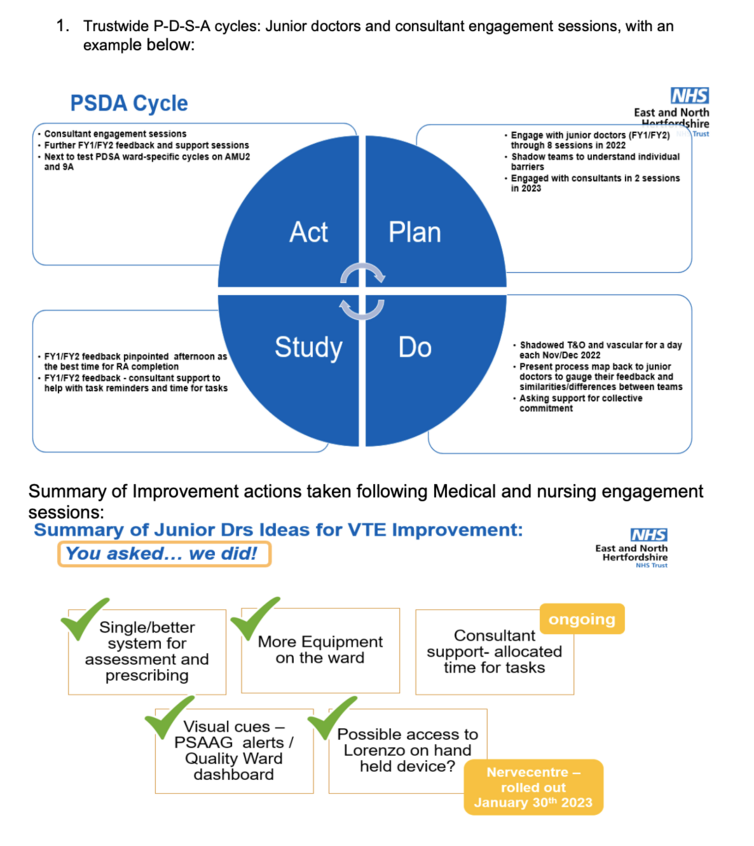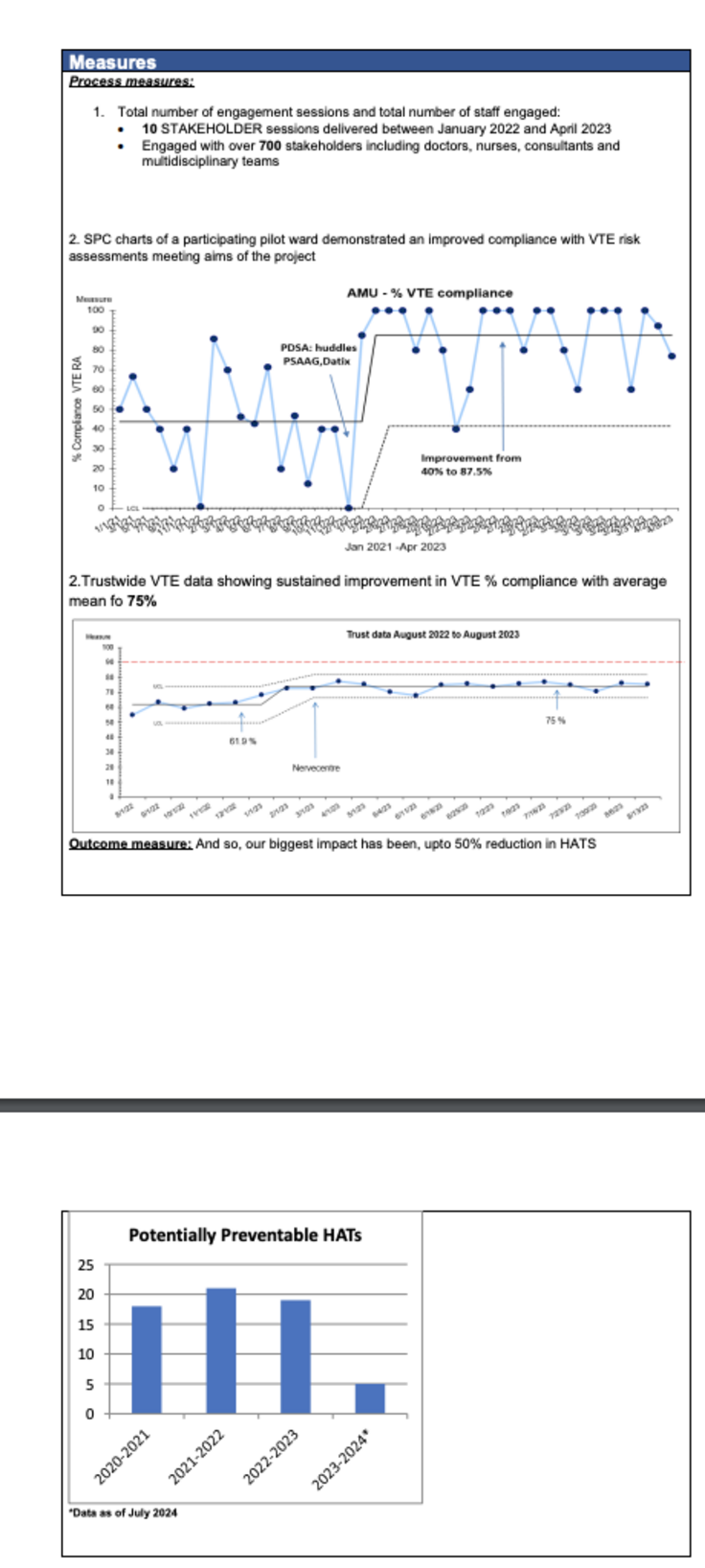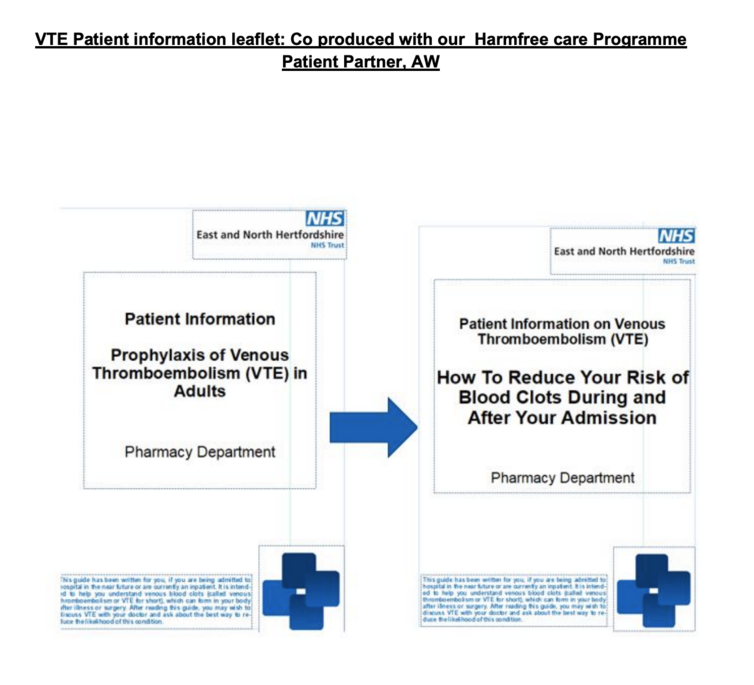The problem!
NHS England and NICE on Venous Thromboembolism (VTE):
60% of VTEs are hospital acquired thrombosis (HATs), the number one cause of preventable hospital deaths.
After VTE risk assessment was mandated, there has been a >20% reduction in adverse outcomes
Key priority of Trust Quality strategy, delivered through Harmfree care QI programme as our current trust wide data evidenced an average mean VTE compliance of 60%. 50% of 2022-2023 potentially preventable hospital acquired thrombosis (HAT)’s were due in part to a delay in completing risk assessment, not risk assessing at all or not re-assessing appropriately.
Key drivers for change:
1. Understand current process of undertaking timely VTE risk assessments: We used ‘5whys’ and ‘value stream mapping tools’ with surgical and medical teams to understand similarities and barriers to daily work within their own contexts
2. Undertake stakeholder engagement sessions: with frontline members of multidisciplinary teams to increase awareness and responsiveness to change
3. Digital collaboration: to implement digital changes and improve human adoption of digital changes.
Once we understood our messy problem, several Plan-Do -Study-Act (PDSA) cycles for purpose of learning and making improvements were carried out:
4. Ward specific PDSA cycles were tested on 2 participating wards that had a VTE % compliance of less than 60%
- PDSA1: Daily board round and huddle reminders for Drs and nurses
- PDSA 2: Datix reporting for incomplete VTE forms
- PDSA 3: ward accountability testing during shift changes, handovers@ 11 am and 4 pm
5. Trustwide PDSA cycles: Junior doctors and consultant engagement sessions were held.

Benefits:
- Stakeholder engagement sessions has enabled us to create a single system for assessment and prescribing thus improving access for all medical, pharmacy and nursing staff involved in the process of supporting a patient from admission to discharge.
- Improving Quality pillars of safety, effectiveness and experience by reducing risk of avoidable harm through timely risk assessments will have a direct impact on reducing preventable hospital acquired thrombosis for our patients.
- Digital innovation of creating a single electronic risk assessment form has led to a standardised process of risk assessment across our entire hospital within in-patient wards.

Resources/Our team:
The above work has been part of the wider harm free care safety programme with purpose of improving patient safety.It is multifaceted and involved the wider multidisciplinary teams.
Key learning:
Understanding of human factors in patient safety is key to making Improvements
We started by asking our staff ‘what matters to you most’ and ‘what gets in the way’. Our learning is that understanding staff perceptions and ways of working influenced our strategy through the application of proven Improvement science methods such as Lean and Model for Improvement to understand ‘work as done vs work as imagined’
Additionally, our harmfree care programme partner has acted in an advisory/coaching capacity to help redesign patient information VTE Leaflet. The use of plain simple language has been invaluable learning for understanding what matters most to our patients!
You can read the key learning and top tips HERE

